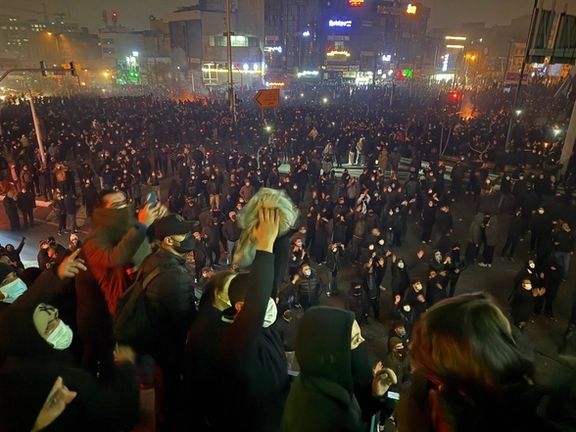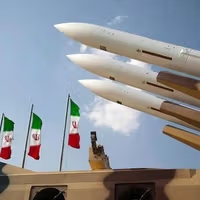Iran's Currency Recovers Some Losses As Israel Tensions Ease

After significant losses since January, the Iranian rial has managed to regain nearly 10 percent of its value over the past week, as tensions with Israel did not escalate as expected.

After significant losses since January, the Iranian rial has managed to regain nearly 10 percent of its value over the past week, as tensions with Israel did not escalate as expected.
In the first two weeks of April amid worsening tensions between Iran and Israel, the foreign exchange market in Tehran witnessed an unprecedented surge, with the dollar briefly reaching the 700,000-rial threshold.
Since early January, the rial had fallen by nearly 30 percent, marking the highest exchange rate recorded for the American currency in Iran. While tensions between Israel and Iran have seemingly cooled off, the rial has gained some value back, trading at 610,000 per dollar.
Israel attacked Iran's consulate in Damascus on April 1, killing two Iranian Revolutionary Guard Corps (IRGC) generals and five military advisers, sharply raising tensions between the arch-enemies. Later, Iran retaliated with an unprecedented drone and missile barrage against Israel, most of which were intercepted.
The tit-for-tat moves appeared to be halted after a suspected Israeli attack targeting Iran’s central city of Isfahan hit a radar system for a Russian-made air defense battery later in April.
The Iranian rial has steadily lost value since the 1979 revolution, began to nosedive in 2018 after the US withdrew from the JCPOA nuclear deal and imposed sanctions on its oil exports and banking sector.
In 1978, the rial was valued at 70 rials per dollar. Over the past five years, the devaluation has exacerbated inflationary pressures, resulting in millions of Iranians falling below the poverty line.
Based on the debt payment calculation table published by the central bank last week, the annual inflation rate in 2023 was 52.3%, the highest in 80 years.
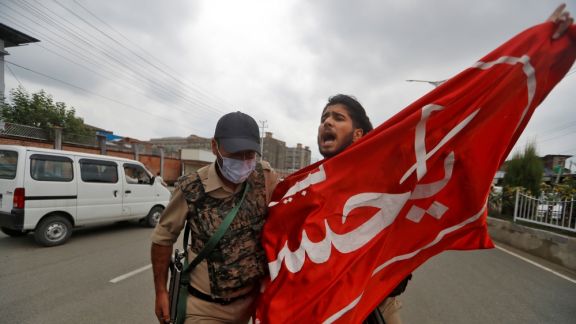
For several years now, I have worked to root out Iranian regime influence in the US, but I also became aware, firsthand, that Iran is seeking to maximize its influence in India, specifically in Indian Kashmir.
After speaking at a conference in India due to my work concerning Islamic extremist groups and the newly contentious Kashmir dispute between India and Pakistan, I flew to Srinigar in Indian Kashmir. I suspected I’d learn more about Sunni extremist groups such as Lashkar-e-Taiba, and how local Kashmiris were responding to the newly implemented reforms of Kashmiri governance due to changes to the Indian Constitution. But I also learned that the Iranian theocracy is very much a player in this drama too, and those who oppose its poisonous influence ought to be more aware of the threat Iran poses.
Understanding the politics of the region is key to understanding the importance of what Iran is doing. In brief, what was the princely state of Jammu and Kashmir prior to Indian independence and partition that was majority Muslim, but Hari Singh, the Maharaja, was Hindu. During partition, Pakistan invaded Kashmir, and the Indians, at Singh’s request, rushed in to defend the rest of the state. The conflict ended in a ceasefire that has functionally been in force since the late 40’s, but with numerous skirmishes and insurgent groups from Pakistan trying to reunite Kashmir over the decades.
In 2019, India removed Kashmir’s semi-independent status, a status originally intended to induce a negotiated settlement, and incorporated Kashmir fully into India. Along with a subsequent lockdown aimed at ending the ability of insurgent groups such as Hizbul Mujahideen to function, this was controversial. The Indian government has repeatedly stated that it will eventually grant full self-government to the state, including in proceedings before the Indian Supreme Court, but for the time it remains a Union territory without the same autonomy of another Indian state.
While the true views of Kashmir’s Sunni population is disputed, some support the Indian Government and at least some parts of the population are more in line with Pakistan, there is little doubt that Kashmir’s Shia community is largely favorable toward the Indian state, which they see as the better option compared to Sunni-run Pakistan. Shias are more favorable to the BJP party than your average Kashmiri, despite BJP’s reputation of having a strong Hindu identity. A local representative of a Shia community, Javid Beigh, has explained that that, in his view, “The separatist movement in Kashmir is primarily for establishment of radical Sunni Muslim Caliphate on lines of what ISIS has done in the Middle East or what Taliban did in Afghanistan.” This fear drives much of the Shia population to support the Indian Government’s actions in Kashmir.
But while Shia and Sunni Islamism can present different threats, they can also manifest as one, particularly when backed by an expansionist theocracy like Iran.
Iran’s influence in the region immediately became obvious when I visited the Hazratbal Shrine, a Kashmiri holy site that reportedly contains a lock of the Prophet Mohammad’s hair. Upon leaving, just a short drive from the Mosque, I saw a huge banner, hanging by the side of the road, that openly celebrated multiple Iranian Ayatollahs, and IRGC Quds Force Commander General Qasem Soleimani, responsible for the death of over 600 American soldiers not counting proxy groups that functionally reported to him, and countless people of other nationalities.

Iran, as a Shia theocracy and a regional power determined to become a regional (and, eventually, global) hegemon, this was perhaps not shocking. Iran’s pattern of seeking influence, and indeed control, of Shias in Lebanon, Iraq, and so on, are well known. I did not expect, however, for it to be so out in the open and celebrated.
Nor was this a one-off. I repeatedly saw similar such propaganda in every neighborhood with significant Shia populations, including various parts of Srinigar, and rural areas surrounding it. They seem particularly concentrated near Shia schools.

Nor was this influence limited to propaganda posters that were prolific in Shia heavy areas. More than once, when meeting with Shia leaders, I was greeted warmly with food that they readily, and even proudly, explained was from Iran. While India ceased buying oil from Iran under pressure from the US, there has been chatter of it resuming doing so, due to fears of disrupted transportation through the Red Sea, vis a vis the Iran backed Houthi movement. Even discounting oil, Iran and has a robust trade relationship with Iran in agricultural products. Indeed, India is Iran’s 3rd largest export destination. Thus, Iran’s influence in India is not merely about propaganda, but financial and cultural ties as well.
Iran seeks to influence Indian Shias through religious figures as well. One activist I met with, whose father was prominent Shia Cleric Aga Syed Hassan Mousavi Al-Safavi, proudly showed pictures of his father meeting with senior Iranian and Shia leaders, including the Secretary General of Hezbollah, Sheik Hassan Nasrallah, perhaps Iran’s most important terrorist proxy. Al-Safavi also retweets Iranian Supreme Leader Khamenei without further comment. So whether or not he agrees with his son, that Iranian meddling in Kashmir is “not helpful,” it remains true that Iran’s views find an open ear with at least a decent portion of India’s Shia population.
This is not true of all Shia, of course. First, there are sects of Shia, such as the Ismaili Shia Muslims, who hold a very different religious and political worldviews. Ismaili follow other clerics, currently led by Imam Shāh Karim al-Husayni, known as Aga Khan IV, the leader of the Ismaili community. Other, Twelver Shia follow Iraqi cleric Ayatollah Sistani and other clerics.
But it remains true that Iran seeks to influence Indian Shia clerics in Iran’s direction and meets with some success. Indeed, some Indian Shia clerics seek approval from Iranian clerics to join in celebrations with local Sunnis. And while it is true that there is some conflict between a number of Iranian clerics and the regime, scholars Reuel Marc Gerecht and Ray Takeyeh make it clear that is “no question who rules.”
The Iranian regime also reaches straight into India, using the Imam Khomeini Memorial Trust (IKMT) to train Shia clergy, particularly, but not exclusively, in the Kashmir region. IKMT makes no secret of its allegiances, posting pictures of the Iranian Supreme Leader on their Facebook page. Mohammad Prevez Bilgrami, a scholar who has extensively discussed Iran’s foreign policy, says that “India is well aware of,” Iran’s influence among Shia clerics, “(And) even silently endorses it,” stressing that “India views the Sunni Muslim fundamentalism and militancy emanating from Pakistan as its prime national-security threat.”
India is not wrong to view Pakistani radical groups, particularly backed by Pakistan’s military and intelligence, as a primary threat, and it is perhaps understandable that they seek better relations with Iran as a result. But that should not cause them to overlook the threat posed by Iran, including on the Kashmir issue. The Iranian Supreme Leader has openly raised the issue of Kashmir, comparing it to the Palestinian cause and Gaza in particular, a common tactic of Pakistani Sunni radicals as well. Particularly after October 7th, it should not take much of an imagination to realize that, if it should become convenient, Iran is capable of working with proxies to reign down death on India, just as it does Israel.
To quote former Pakistani Ambassador Hussain Haqqani, now living in exile in the United States, “Iran’s goals in Asia appear to be expansion of economic and political leverage, spread of Islamist ideology, and the recruitment of cannon fodder for its proxy wars. It also hopes to keep in check the influence of Israel, Saudi Arabia, and the United States.”
Indeed, Iran will seek to damage India’s budding and increasingly important relationship with Israel (a relationship so important and budding that Islamists and their allies on the far left openly seek to demonize the India/Israel relationship specifically) whenever it can, and will do the same with India’s close relationship with the Gulf Monarchies, as well as its increasingly close relationship with the US. Iran is already is seeking to use Indian Muslims as “cannon fodder” for its proxy wars, something Khamenei has praised openly.
Washington should seek to make it easier for Delhi to choose the US and its allies over Iran. But India should also be aware that Iran is trying to put its thumb on the scale against the US. India should what it can to resist the siren’s call of Iran’s influence operations because Iran has demonstrated time and time again, in Iraq, in Syria, in Lebanon, and beyond, it is no respecter of nations, and will not hesitate to tear countries apart to achieve its theocratic aims. Given enough time and resources, Iran will eventually turn its attention to India, and especially Kashmir. It’s already laying the groundwork.

A group of 61 lawyers has issued a condemnation of the morality police's aggressive tactics in Iran, particularly criticizing the controversial Nour project to enforce hijab.
Nour, the regime’s new hijab enforcement plan, has seen Iranian authorities escalate their physical efforts to enforce the Islamic Republic’s strict hijab laws. It has led to a surge in violent crackdowns targeting women on Iranian streets.
The lawyers declared such actions illegal and in violation of both the national constitution and international human rights agreements.
"Continuing these policies will undoubtedly lead to more conflict, confrontation, and insecurity in society, and will create more harmful aspects for women," read the statement.
Despite the government's efforts to enforce mandatory hijab laws, a strong wave of civil disobedience continues. Many women have been seen in public spaces without a hijab, protesting against these impositions.
Contrasting with this criticism, Grand Ayatollah Naser Makarem Shirazi sent a supportive message to Ahmadreza Radan, Iran’s Police Chief, encouraging him to enforce the hijab laws with "strength and determination." Radan echoed the sentiment, emphasizing the perceived threat if such moves are not upheld: "If the enemy overcomes the trench of chastity and hijab, nothing will remain for us."
Recent crackdowns, initiated following a directive by Supreme Leader Ali Khamenei on April 13, have led to the arrest of hundreds of women across various cities in Iran. Yet, the spirit of resistance among Iranian women remains strong. In one notable incident, a woman was arrested at the Beheshti judicial complex in Tehran for appearing without a hijab, stating, "I have come here with hijab all my life; this time I came without a hijab to reclaim my rights."
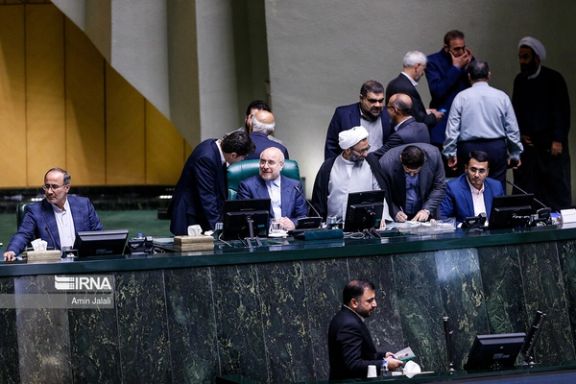
The Iranian government and its ultra-hardliner supporters advocate adding Thursdays as the second official weekend day, allegedly to avoid the Jewish Sabbath.
Currently, Friday is the only official day of rest in Iran, but many government offices and private companies also observe part-time or complete closures on Thursdays. A bill submitted to parliament last year aims to shorten the weekly work hours from 44 to 40 and will be debated in the parliament in the coming days.
Some lawmakers such as Ali-Asghar Anabestani say the parliament’s Social Committee which has reviewed the bill has been convinced by the representatives of the public institutions, including chambers of commerce, that Saturday is a better option than Thursday as the second week end day, but its advisory decision may be overturned by more hardliner lawmakers when it comes to a vote.
President Ebrahim Raisi’s parliamentary deputy, Mohammad Hosseini, said Wednesday that the government is in favor of the Thursday option.
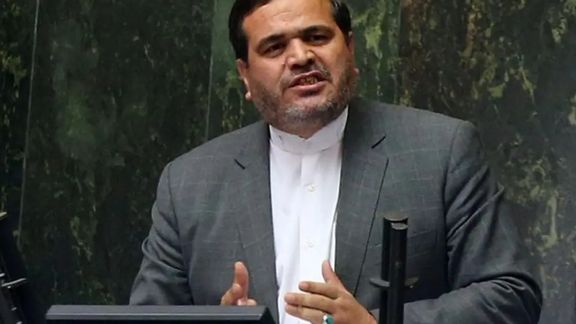
Many in Iran's private sector and others, however, say this will entail very negative consequences for Iran's foreign trade, tourism, and international relations because the workdays shared between Iran and the rest of the world will be down from Monday to Wednesday, leading to four consecutive days of no contact, if Thursday is approved.
They also argue that weekends in other Islamic countries in the region including Saudi Arabia, the UAE, Pakistan, Turkey, and Iraq is also on Friday and Saturday.
The arguments forwarded by government officials and supporters against Saturday make no reference to undesirability of having a rest day that is reminder of the Jewish Sabbath, but some private sector officials and media have disclosed that their objections are essentially ideological rather than practical or cultural as they claim.
“In various and numerous meetings with lawmakers…representatives of the chamber have pointed out the damage and erroneousness of designating Thursday as a weekend day … Their only argument against what we want is that Saturday is a Jewish day of rest!!!!” Ali Kolahi, Chairman of the Industries Committee of the Iran Chamber of Commerce posted on X on April 15.
Ideological hardliners dominating the parliament and the government have well-documented anti-Jewish and anti-Israeli positions. The Islamic Republic’s ruling regime has spent tens of billions of dollars through the past four decades to create and support anti-Israeli groups and campaigns in the region and across the world.
Those who object to designating Saturday as a day of rest cannot refute the arguments of businesspeople, an editorial by the reformist Ham-Mihan this week said. “The problem lies elsewhere, meaning that for millennia Saturday has been known as a Jewish rest day like Friday for Muslims or Sundays for the Christian,” the editorial said.
Amir-Hossein Hosseini, a businessman with hardline views, too, referred to such considerations in a tweet. Designating Saturday as a weekend day is like a “cultural, economic, religious, and social surgery” that only serves the interests of a “few members of the Chamber of Commerce”, he said while accusing them of harboring “anti-religious” thoughts.
The private sector has tried lobbying with top Shia clerics who can issue guidance in such matters to confirm that Thursday is not religiously significant or sacred like Friday and the chairman of Iran Chamber of Commerce, Samad Hassanzadeh in a letter on April 17 even appealed to Supreme Leader Ali Khamenei to support the private sector’s position.
Those in favor of Saturdays have also argued that private sector trade companies may decide to emigrate to other countries such as the UAE or Oman to facilitate their activities if Thursday is approved.
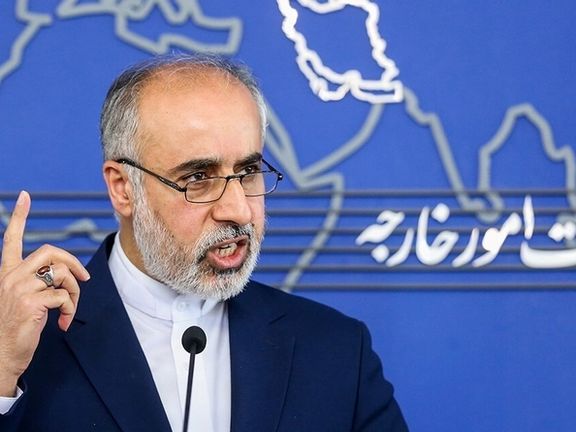
Iran has issued a condemnation of new sanctions imposed by the United States, the United Kingdom, and Canada against several Iranians and companies following Iran's military actions against Israel this month.
Nasser Kanaani, the spokesperson for the Foreign Ministry, criticized the measures and the concurrent resolution passed by the European Parliament which criticizes Iran's actions and calls for increased sanctions.
Kanaani accused several European countries of aligning with what he described as the "cruel policies" of the US government.
They followed an unprecedented Iranian attack on Israel when Tehran sent 350 plus drones and missiles towards Israel, mostly intercepted by Israel and a US-led coalition. Tehran said the attack was retaliation for an alleged Israeli strike on the Iranian consulate in Damascus.
The recent sanctions target more than a dozen entities, individuals, and vessels linked to Iran’s efforts in advancing its unmanned aerial vehicles (UAVs) capabilities, which the US Treasury Department says supports Iran's military engagements, including actions in Ukraine and against Israel.
Brian Nelson, the Treasury’s Under Secretary for Terrorism and Financial Intelligence, highlighted the destabilizing role of Iran's Ministry of Defense, accusing it of aiding hostile activities across the region and beyond.
Furthermore, the European Parliament's resolution also pushes for the designation of Iran's Islamic Revolutionary Guard Corps (IRGC) as a terrorist organization, citing long standing concerns over Iran's malign activities. The resolution calls on EU Foreign Policy Chief Josep Borrell and the EU Council to consider similar designations for Hezbollah, Iran's proxy in Lebanon, the biggest and wealthiest of Tehran's regional terror groups.
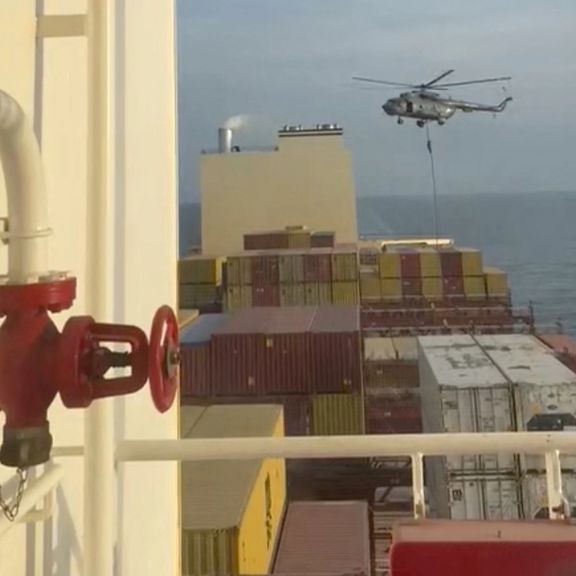
Iran's Foreign Minister announced that the crew of the Portuguese-flagged ship MSC Aries has been granted consular access and is expected to be released soon.
The announcement by Hossein Amir-Abdollahian came during a telephone conversation with Portuguese Foreign Minister Paulo Rangel, as reported by the Iranian Foreign Ministry website on Saturday.
Amir-Abdollahian said that the crew would be turned over to their ambassadors in Tehran, though no specific timeline for the action was provided. Crew members hail from countries including India, Pakistan, Russia, the Philippines and Estonia.
The Iranian foreign ministry has accused the MSC Aries of "violating maritime laws" and maintains that the ship has links to Israel. The vessel is leased by MSC from Gortal Shipping, an affiliate of Zodiac Maritime, which is partly owned by Israeli businessman Eyal Ofer.
The MSC Aries, carrying a crew of 25, was seized by Iran's Revolutionary Guards in the Strait of Hormuz, on April 13, the same day that Iran launched its first direct attack on Israel, with an aerial bombardment of 350 drones and missiles towards the Jewish state.
It followed a suspected Israeli airstrike on its consulate in Damascus on April 1 which resulted in the death of a senior Quds Force commander and the deaths of several members of the Islamic Revolutionary Guard Corps (IRGC).
The hijacking coincides with the Iran-backed Houthis' Red Sea blockade which began in November. A crew of 25 on the Galaxy Leader after its hijacking which saw commandos take over the ship in a multi-faceted operation from air and sea. The crew are still being held captive by the Yemeni group whose blockade aims to force a ceasefire on Israel.
Started as a campaign against Israeli shipping, instigated by Iran's supreme leader, it has since expanded to global shipping, seeing 50 percent of shipping on the major trade route now re-routing via Africa.
